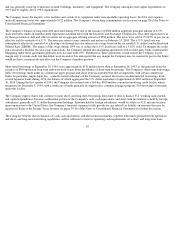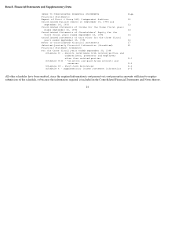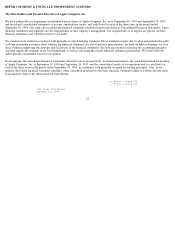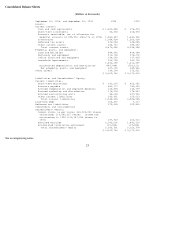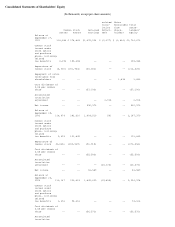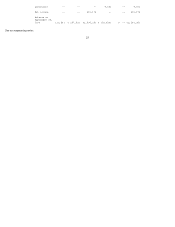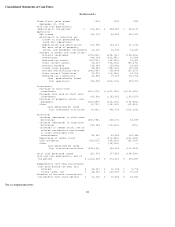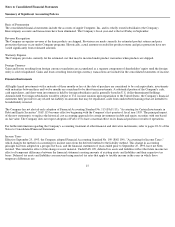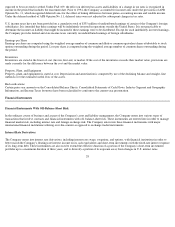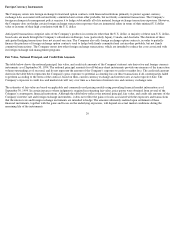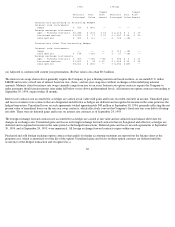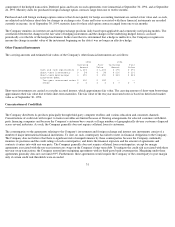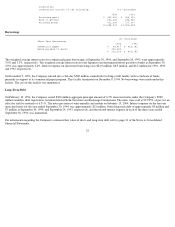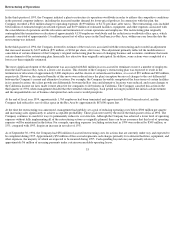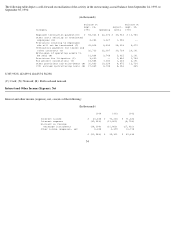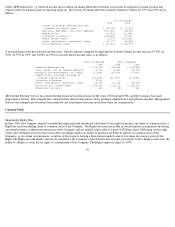Apple 1994 Annual Report Download - page 32
Download and view the complete annual report
Please find page 32 of the 1994 Apple annual report below. You can navigate through the pages in the report by either clicking on the pages listed below, or by using the keyword search tool below to find specific information within the annual report.Foreign Currency Instruments
The Company enters into foreign exchange forward and option contracts with financial institutions primarily to protect against currency
exchange risks associated with certain firmly committed and certain other probable, but not firmly committed transactions. The Company's
foreign exchange risk management policy requires it to hedge substantially all of its material foreign exchange transaction exposures. However,
the Company does not hedge certain foreign exchange transaction exposures that are immaterial either in terms of their minimal U.S dollar
value or in terms of their high correlation with the U.S. dollar.
Anticipated transactions comprise sales of the Company's products in currencies other than the U.S. dollar. A majority of these non-U.S. dollar-
based sales are made through the Company's subsidiaries in Europe, Asia (particularly Japan), Canada, and Australia. The duration of these
anticipated hedging transactions does not exceed one year. The Company also sells foreign exchange option contracts, in order to partially
finance the purchase of foreign exchange option contracts used to hedge both firmly committed and certain other probable, but not firmly
committed transactions. The Company enters into other foreign exchange transactions, which are intended to reduce the costs associated with
its foreign exchange risk management programs.
Fair Value, Notional Principal, and Credit Risk Amounts
The table below shows the notional principal, fair value, and credit risk amounts of the Company's interest rate derivative and foreign currency
instruments as of September 30, 1994. The notional principal amounts for off-balance-
sheet instruments provide one measure of the transaction
volume outstanding as of year end, and do not represent the amount of the Company's exposure to credit or market loss. The credit risk amount
shown in the table below represents the Company's gross exposure to potential accounting loss on these transactions if all counterparties failed
to perform according to the terms of the contract, based on then- current currency exchange and interest rates at each respective date. The
Company's exposure to credit loss and market risk will vary over time as a function of interest rates and currency exchange rates.
The estimates of fair value are based on applicable and commonly used pricing models using prevailing financial market information as of
September 30, 1994. In certain instances where judgment is required in estimating fair value, price quotes were obtained from several of the
Company's counterparty financial institutions. Although the table below reflects the notional principal, fair value, and credit risk amounts of the
Company's interest rate and foreign exchange instruments, it does not reflect the gains or losses associated with the exposures and transactions
that the interest rate and foreign exchange instruments are intended to hedge. The amounts ultimately realized upon settlement of these
financial instruments, together with the gains and losses on the underlying exposures, will depend on actual market conditions during the
remaining life of the instruments.
29


